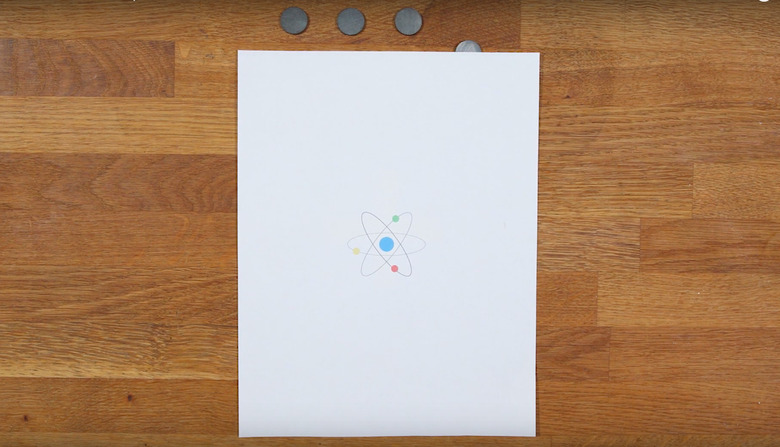Quick & Easy Experiments With Magnets
Magnets are not only useful tools that are fun to use, they also make excellent subjects for quick and simple science experiments. You can use magnets found in common household electronics — and even those that go on refrigerators — to demonstrate some of the most fascinating properties of magnetism without much preparation or cost.
Nail Electromagnet
Nail Electromagnet
Wrap a length of copper wire around an iron nail so that 8 inches of wire are left uncoiled at each end. Take one end of the wire and tape it to the positive (+) end of a AA battery, and tape the other end of the wire to the negative (-) end of the battery. When the wire is connected to both ends, the current that flows through the wire magnetizes the nail. You can then use the nail to attract small metal objects, such as paperclips. Record which objects are attracted to the nail and which aren't, and which objects were attracted but were too heavy. You can also experiment with larger batteries to see how they affect your magnet's strength.
Measuring Magnetic Fields
Measuring Magnetic Fields
Lay a ruler flat on a table. Place a magnet alongside the ruler and align the magnet's edge with the 1-inch line on the ruler. Then, place a paperclip beside the magnet, along the ruler's same edge and aligned with the 2-inch line. If the paperclip attracts toward the magnet, move the paperclip back a half-inch. Continue to move the paperclip either closer or farther away from the magnet — along the ruler's edge — to find the distance at which the paperclip is no longer attracted, and then measure that distance on the ruler. You have just measured the length of the magnet's magnetic field. Then, repeat the same process with different magnets and record the length of their magnetic fields. Afterward, you can compare the magnetic fields of the different magnets.
Illustrating Magnetic Fields
Illustrating Magnetic Fields
For this experiment you'll need a handful of magnets, a piece of paper and iron filings. Place magnets on a table – close enough that you can cover them with a single sheet of paper.
1. Cover Magnets with Paper
Place a plain white sheet of paper on top of them, and then sprinkle iron filings on the paper.
2. Add Iron Filings
Tap the paper a few times to get the filings moving, and watch as they take the shape of the magnetic fields. Make sketches on separate sheets of paper to record the shapes of the fields.
You can then rearrange the positions of the magnets to see how the filed shapes change, and record them as well.
The Simplest Motor
The Simplest Motor
Set the head of a drywall screw onto the flat side of a neodymium disc magnet so that the screw stands straight up. Then bend a piece of copper wire so you can easily touch it to both ends of the motor you'll build. Lower the positive (+) end of a C battery to the top of the screw until the tip of the screw attaches itself to the battery. Lift the entire device carefully. Touch one end of the wire to the negative (-) end of the battery, and use a finger to hold it in place. Touch the other end to the edge of the disc magnet. When the wire makes contact with both the battery and the magnet, the electrical charge moves radially along the magnet's axis, and causes it — and the screw — to spin.
Cite This Article
MLA
Cascio, Christopher. "Quick & Easy Experiments With Magnets" sciencing.com, https://www.sciencing.com/quick-easy-experiments-with-magnets-12757658/. 17 May 2019.
APA
Cascio, Christopher. (2019, May 17). Quick & Easy Experiments With Magnets. sciencing.com. Retrieved from https://www.sciencing.com/quick-easy-experiments-with-magnets-12757658/
Chicago
Cascio, Christopher. Quick & Easy Experiments With Magnets last modified August 30, 2022. https://www.sciencing.com/quick-easy-experiments-with-magnets-12757658/

